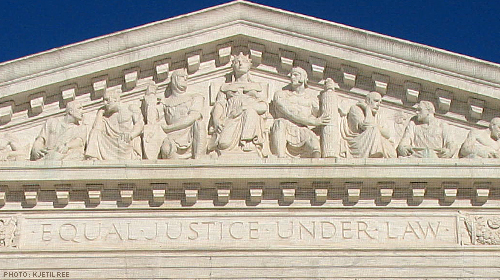Sweeping Ruling about Racial Bias in Capital Jury Selection Shows the Need for Sweeping Reforms


Last week, North Carolina state Judge Gregory Weeks issued a sweeping ruling setting aside the death sentences of three North Carolina prisoners because of a wealth of evidence proving the prosecutors‚Äô racial bias in jury selection. The ruling was based on evidence from the ‚Äúwords and the deeds of the prosecutors involved in the Defendants‚Äô cases,‚ÄĚ Weeks wrote. This evidence provided a unique window into how and why prosecutors use race in jury selection.
There is no reason to believe the practices of the Cumberland County district attorneys’ office were unique. In fact, all of the statistical evidence shows otherwise. As Weeks previously found in the first case brought under North Carolina’s Racial Justice Act, researchers from Michigan State University College of Law conducted a rigorous, highly reliable study of jury selection and found pervasive, powerful, and unrefuted evidence of discrimination by prosecutors across the state.
When potential juror Mardelle Gore, an African-American woman, stepped into the jury box for questioning by the lawyers in Quintel Augustine’s capital case, she already had a strike against her in the view of the Cumberland County prosecution.
Gore was in many ways the kind of juror the prosecution often says it seeks in capital cases: she was a long-term resident, a regular voter, and not opposed to the death penalty. But Gore‚Äôs name was on a handwritten list the Cumberland County prosecutor had prepared titled ‚Äújury strikes‚ÄĚ. Next to Gore‚Äôs name was a short comment in the prosecutor‚Äôs handwriting about the neighborhood Gore lived in, ‚ÄúLongwood-- bad area.‚ÄĚ Longwood was one of several African-American neighborhoods the prosecution had flagged on its ‚Äújury strikes‚ÄĚ sheet.
The sheet had a number of more inflammatory and obviously racially biased references. One prospective juror, who had no record of alcohol or drug offenses, was described as a ‚Äúblk wino ‚Äď drugs.‚ÄĚ A white prospective juror was described, in contrast, as ‚Äúdrinks -- country boy -- ok.‚ÄĚ The prosecution noted that another prospective African-American juror, who was from ‚Äúa respectable black family‚ÄĚ was ‚Äúokay.‚ÄĚ
The ‚Äújury strikes‚ÄĚ document is the kind of smoking gun that is rare to find in racial-discrimination litigation. But the treatment of Gore is an example of a more subtle form of racial discrimination that social science experts tell us is widely common today. At the time of the trial, lawyers for Augustine questioned the strike of Gore because the prosecution struck every black juror they questioned. The prosecutor offered a handful of reasons. Left out were the neighborhood Gore lived in and the prosecution‚Äôs intent to exclude anyone from there. This type of redlining is an example of how racial bias continues to operate‚ÄĒin most cases, undetected-- in capital cases. In the end, Augustine was tried by an all-white jury.
The explanations for striking Gore are another example of how racial bias operates in jury selection. Two of the explanations the prosecutor gave for striking Gore, her body language and her ‚Äúmonosyllabic‚ÄĚ answers are a direct match to a ‚Äúcheat sheet‚ÄĚ training document created for prosecutors of prepared explanations they could give to defeat questions about the role of race in jury selection.
There can no longer be any serious question about whether race drove jury selection in capital cases. What remains to be answered is how North Carolina can, and will, respond. Make no mistake, changing the culture and practice of jury selection to remove the role of race will be no small task. It will require commitment -- from senior prosecutors as well as new hires -- to participate and take seriously trainings about how to confront and battle unconscious biases. That includes a focus on the importance of the constitutional prohibition against racial discrimination, rather than distributing materials about how to circumvent the prohibition.
These cases provided an unprecedented examination of the role of race in capital jury selection. By comparing evidence across cases, Weeks was able to peel away layers of pretext and subterfuge that have for too long concealed the role of race. This kind of close and unflinching investigation lives up to part of the promise of the Racial Justice Act. It is up to the district attorneys, though, to complete the promise and enact the kinds of reforms that will prevent the need for the law in the future.
Learn more about the Racial Justice Act: Sign up for breaking news alerts, , and .


